(1875 - 1951)
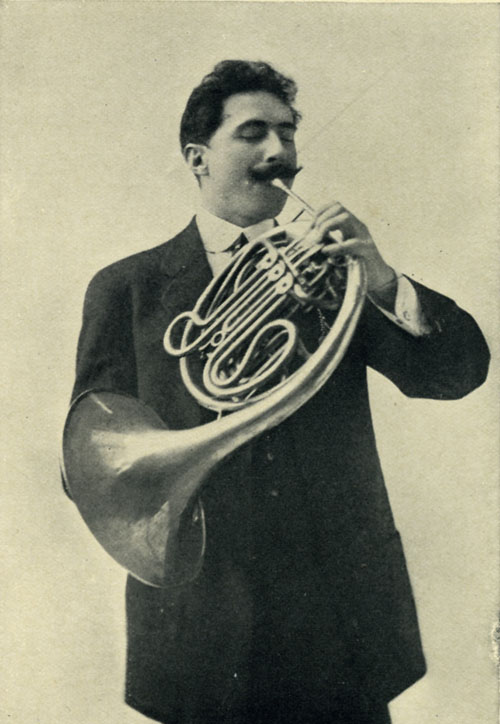
Photo: Mason (1908)



|
|
|
|
The case was reported across the country including as far away as Anaconda, Montana. The New York Herald included a photo of Miss Nutter (right) stating that she "thinks that a man who has jilted a woman as she says Hand jilted her should be punished for the sake of other women whom he may feel tempted to deceive in the same way, and as a warning to others of her sex." The article goes on extensively quoting Miss Nutter's views. The Kalamazoo Gazette quoted Mr. Hand as saying "Breach of promise? Bah! ... Everybody knows I'm married. How can I be asking any woman to be marrying me when I haven't got a divorce? I never asked her to marry me. We met on shipboard, and she told me all of her troubles and asked me to help her. I lent her money and paid her bill at a Melbourne hotel. Then she turned against me and has been abusing me to my fellow musicians." According to Miss Nutter, however, "He promised to marry me soon and settle down soon in Australia where he was acquainted. ... He was always talking about his troubles with his first wife, whom he said he had divorced, and told me he would make an ideal husband. Oh, he was very romantic." |
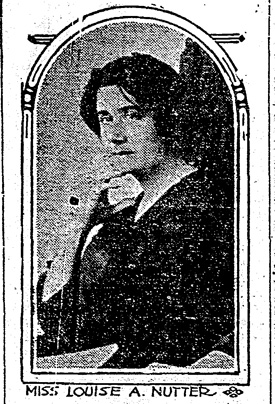 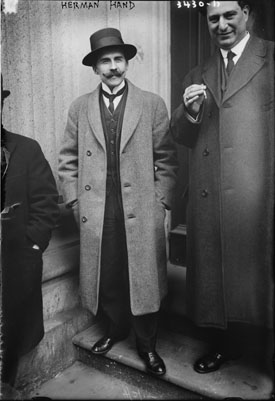 Photo dated 4/2/15.
(Library of Congress)
|
In the midst of his troubles with Miss Nutter, Mr. Hand continued his horn playing career in New York. He apparently remained with the Sousa Band for a time after the 1911 Tour. According to the Springfield Republican (December 27, 1912): "The Pittsfield [Massachusetts] symphony orchestra, which is to give its first concert next Monday evening, is now composed of 41 musicians. ... Herman Hand, first French horn in Sousa's Band, now disbanded for the winter, is to be with the orchestra." |
|
Three days after his fortieth birthday, Mr. Hand married Maria Magdalena Schwartz (1883 - 1948) in Jersey City, New Jersey on August 20, 1915. 11 The couple had one child, Maria Rosa Hand, born May 19, 1920. |
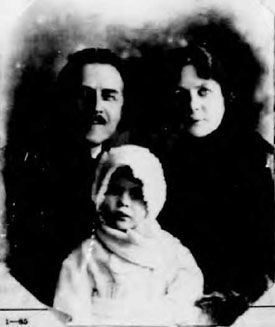 Passport photo ca.
1923
|
In 1918 he registered for the draft and listed his employer as Victor Baravalle. In 1920 Mr. Hand was employed once again by S.L. Rothapfel, this time as solo horn and as an orchestrator at the Capitol Theatre. In June he made a special orchestral arrangement of "The Swan" by Camille Saint-Saens for ballerina Mlle. Gambarelli. 12 |
|
The February 26, 1921 issue of The Billboard announced that at the Capitol Theatre, New York, Balletmaster Alexander Oumansky will present the "Papillon" Ballet by Schumann, for which a special orchestration has been made for this presentation by Herman Hand of the Capitol Orchestra. Mme Gambrielli, Doris Niles and A. Oumansky will take the principal roles and be assisted by ten other members of the Ballet Corps. Earlier that same month he was part of A Great Musical Feat. "The value of a perfectly functioning musical organization was illustrated at the Capitol Theatre, Manhattan, last week, when an original overture was conceived, written, arranged, and rehearsed in one week, by the members of the Capitol Grand Orchestra, and was presented in commemoration of Washington's Birthday. ... Short scores were written by Erno Rapee and William Axt. A few phrases at a time they were turned over to Herman Hand, who wrote the orchestral score." Also in 1921 he and Rapee and Axt arranged music for the New York revival of D.W. Griffith's, "Birth of a Nation." 13 |
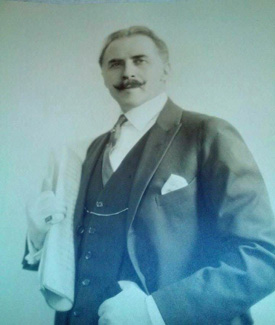 Age 46 (ca. 1921)
|
|
|
|
Starting on September 25, 1921 Mr. Hand directed the Lexington Festival Orchestra for a two-week engagement, at the Lexington Theatre in Manhatten. The Irish photoplay "Knock-na-Gow" adapted from Charles J. Kickham's novel, was presented "to a delighted audience that applauded enthusiastically." He furnished "a proper musical setting and also [presented] a separate program of unusual excellence." On November 7, the Lexington presented Hamlet by Asta Films, accompanied by scenes from Shakespeare's play. "Incidental and very effective music was provided by Herman Hand who led an augmented orchestra, and the house was very well filled." |
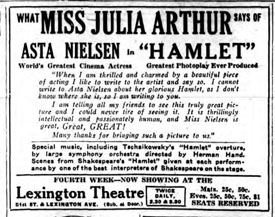 |
|
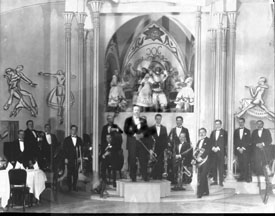 |
The above photo is from an advertisement for Buescher saxophones featuring Paul Whiteman and his orchestra. The players are identified in the original photo as follows: (left to right), seated: Mike Pingitore, Sam Lewis, Tommy Gott, George Unger, Henry Busse, Ferde Grofé, Hale Byers, Morris Speinson, Donald Clark, Herman Hand, Ross Gorman. Standing: Harold McDonald, Jack Barsby, Paul Whiteman, Phil Ohman. |
|
|
|
By 1928 the family had moved to Beverly Hills, California where Mr. Hand found employment in the motion picture industry as a composer and arranger. One of his first assignments was "Night Watch", a silent film released on September 9, 1928 by First National Pictures. His next work was on "The Wolf Song" for Paramount Pictures, an early sound film for which the musical score, singing, and sound effects were recorded but the dialog was silent, released March 30, 1929. In 1938 he was a founding member of the American Society of Music Arrangers and Composers (ASMAC). |
|
Acknowledgments
Very special thanks to Mrs. Jean M. Heiman for providing additional photos and family information.
References
Bierley, Paul Edmund, The Incredible Band of John Philip Sousa, University of Illinois, 2006
Elson, Louis C., University Musical Encyclopedia, vol. II, The University Society, Inc, 1912
La Grange, Henri-Louis de, Gustav Mahler Volume 4 A New Life Cut Short (1907 -1911), Oxford University Press, Oxford, 2008
Mason, Daniel Gregory, The Orchestral Instruments And What They Do. A Primer for Concert Goers, New York, The H.W. Gray co., sole agents for Novello & co., ltd., 1908